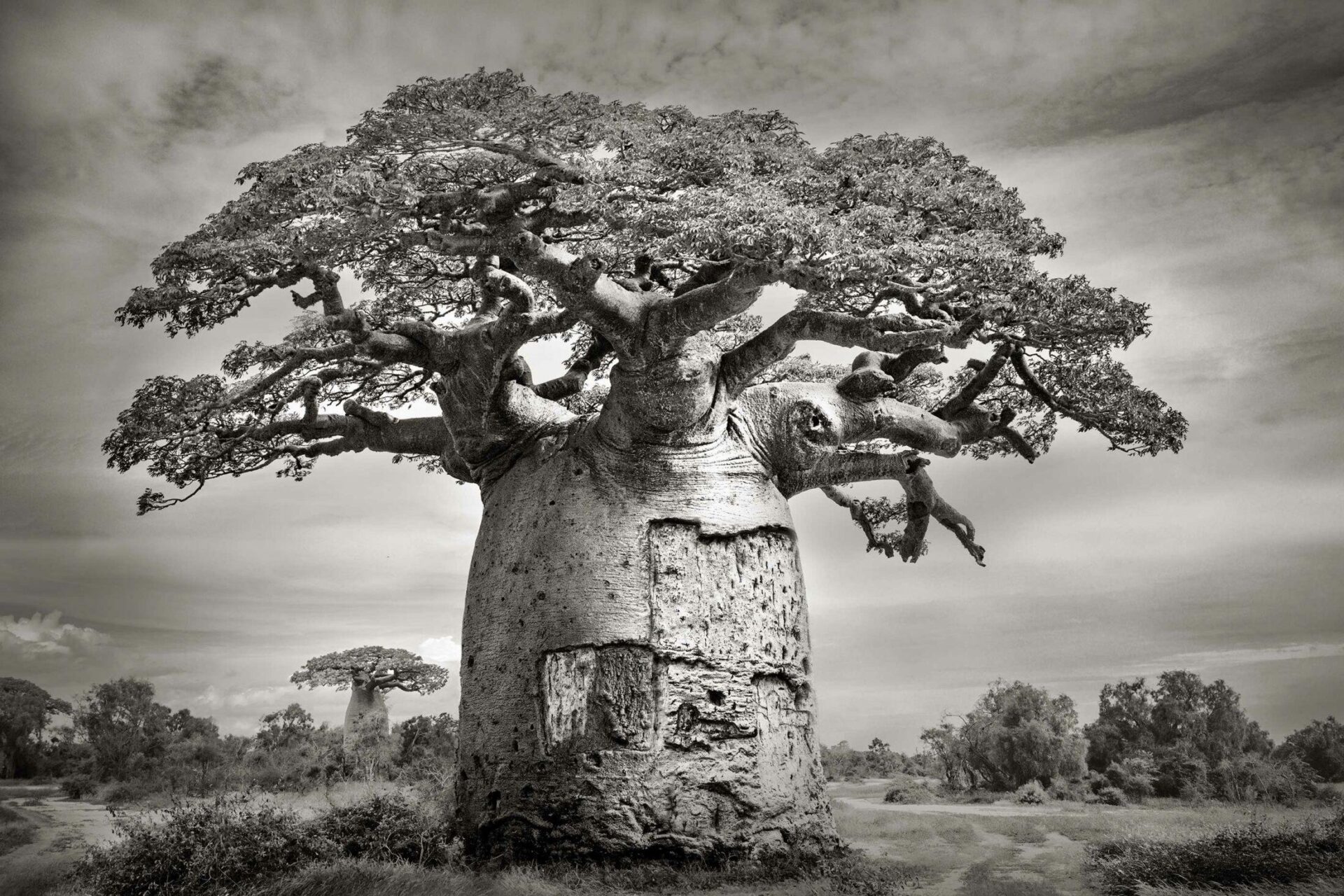A baobab tree is a very large, unique tree that is native to Africa. The tree has a thick trunk and branches that are ofen described as being “like arms reaching out to hug you.” The tree can grow to be over 30 feet tall and its trunk can be up to 15 feet in diameter! The leaves of the baobab tree are large and round, and the tree produces small, white flowers. The fruit of the baobab tree is an egg-shaped capsule that contains a powdery substance that is used to make a variety of products, including cosmetics, food, and medicine.
What Is So Special About The Baobab Tree?
The baobab tree is an iconic and essential tree in many African cultures and is known as “The Tree of Life”. The tree is a succulent, which means that it has adapted to its environment by storing water in its trunk during the rainy season. This enables the tree to produce a nutrient-dense fruit during the dry season when all around is dry and arid. The baobab tree is also an important source of food and medicine for many people in Africa.

Can You Eat The Fruit Of A Baobab Tree?
Yes, you can eat the fruit of a baobab tree! The fruit is rich in vitamins and minerals, and has a unique flavor that can be enjoyed fresh or used to add a punch of flavor and nutrients to desserts, stews, soups and smoothies. However, finding fresh baobab may be challenging in countries whre the fruit is not commonly grown.
Can You Grow A Baobab Tree In The US?
Yes, you can grow a baobab tree in the US, but it is not easy. The tree is native to Africa and needs a hot, dry climate to thrive. In the US, it can only be grown in southern Florida and southern California.
Can You Drink Water From A Baobab Tree?
No, you cannot drink water from a baobab tree. Although the tree consists of 76% water, this water is not available for us to drink. The tree stores the water in its trunk and leaves, and this water is not accessible to us.
What Is Baobab Used For?
The baobab tree is an iconic and essential tree in many African cultures and is known as “The Tree of Life”. The tree is a succulent, which means that it has adapted to its environment by storing water in its trunk during the rainy season. This enables the tree to produce a nutrient-dense fruit during the dry season when all around is dry and arid. The baobab tree is also an important source of food and medicine for many people in Africa.
How Many Baobab Trees Are Left In The World?
There are nine baobab species in the world, six of which are found only in Madagascar. Three of those are currently endangered, and the Adansonia perrieri is the most endangered of all, with fewer than 250 mature trees remaining today.

What Does Baobab Fruit Taste Like?
A ripe baobab fruit has dry, white flesh that tastes like yogurt or tamarind. It has low levels of sweetness and a subtle tang, like a mild lemon. The texture of a baobab’s kernels is a unique chalky, dry consistency that may leave a fine flour-like powder coating in your mouth.

How Long Do Baobab Trees Take To Grow?
The baobab tree is a slow-growing tree, with some taking 15 to 20 years to fruit. Grafting has proven successful, and grafted trees fruit in approximately five years.
What Are The Side Effects Of Baobab?
The seeds and pulp of baobab contain certain antinutrients, especially phytates, tannins, and oxalic acid, which interfere with and reduce the absorption of nutrients. In large amounts, these substances can cuse digestive upset, including nausea, vomiting, diarrhea, and constipation. They can also bind to minerals in the gut and prevent their absorption, leading to deficiencies in calcium, iron, magnesium, and zinc.

Can Baobab Survive Winter?
The answer is yes, baobab trees can survive winter weather. However, they do not like temperatures blow 12 degrees Celsius and may suffer damage if exposed to such cold temperatures for extended periods of time. It is best to plant baobabs in frost-free areas to avoid any potential damage from winter weather.

How Old Do Baobab Trees Get?
The African baobab tree (Adansonia digitata) is the oldest living flowering plant, or angiosperm. Individual trees can live for more than 2,000 years.
Do Trees Cry?
Yes, trees can cry. When they are stressed due to drought, for example, they release an ultrasonic noise that has been captured by French scientists in the lab. This noise is made by bubbles forming inside water-stressed trees and is a cry for help.
What Does Baobab Smell Like?
The flowers of the baobab tree have a unique and intense scent that has been described as smelling like rotting flesh or carrion. This is likly due to the high levels of nitrogen in the flowers, which produce a strong and pungent smell. While this may not be pleasant to humans, it is an important attractant for the nocturnal insects that pollinate the baobab tree.
What Animal Eats Baobab?
In Africa, monkeys and warthogs devour baobab fruit and seedpods, and weaver birds stitch their nests into a baobab’s huge branches. Galagos—also known as bushbabies—and fruit bats lap up baobab nectar. Elephants and other wildlife sometimes eat spongy baobab bark, which provdes moisture when water is scarce.
Is Baobab In The Bible?
There is no mention of baobab in the Bible.
